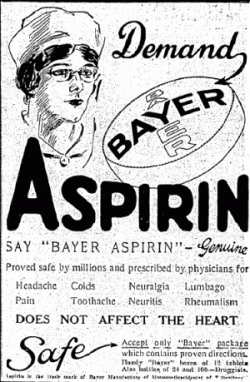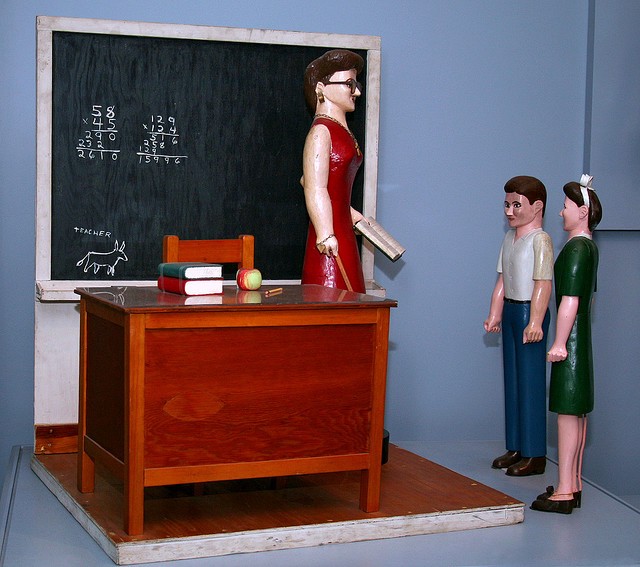How Much More Does Aspirin Cost Today?

One thing aspirin is not: polarizing. If you are going to have a tiff with a friend, aspirin will not be the topic. Aspirin is actually a great unifier — it’s one of the sundries that can be found in every home across the country. Aspirin is easy to find, and it is here to help. With all sorts of things, of course, but between you and me, mostly hangovers. And people who are paranoid of incipient heart disease, they also are big aspirin fans.
Perhaps you yourself are one of those people who overindulge in the bendy elbows and/or quiet fears of your own mortality. So let’s look then at this unassuming little drug that has so insinuated itself into our lives, either the morning after or right before bedtime (or both!): does aspirin cost as much now as it did ten years ago, or thirty, or sixty?
Aspirin is on the surface a pretty blasé topic. It’s a pill. You take it. It’s supposed to make you feel better. But if you give it a good hard look, it’s actually pretty fascinating.
For instance, can you think of a more popular, more used drug in human history? Unless recreational drugs are included, you cannot. And that is for a medicine that is largely unchanged (other than in delivery mechanisms) since its popularity boomed at the turn of the Twentieth Century.
The predecessor of aspirin, the bark and leaves of a willow tree (either chewed, in the case of leaves, or as a powder made after boiling the two) has been used since the time of the Ancient Greek, and its effects were noted by no less a luminary than Hippocrates. The bark contains salicin, the natural compound that was turned into salicytic acid by European chemists in the early 1800s. This was further refined by German Felix Hoffmann, a chemist for the Bayer company in Germany in1897. The result, acetylsalicylic acid (aspirin!) relieved the symptoms of Hoffmann’s father’s rheumatism.

At the time, Bayer was in the business of producing dyes, and the industry of producing compounds for medicinal use as we know it did not yet exist. Bayer would market this aspirin to physicians in 1899, setting into motion the modern pharmaceutical industry, as Bayer applied the salesmanship and marketing expertise from its previous trade — selling dyes — to the business of making medicinal drugs for profit, which business has continued and prospered to the point where executives of Big Pharma are known to commute by helicopter. Think about that when you pop your daily aspirin before bedtime.
And actually, if you are thinking about that as you dose yourself, you might recall that Bayer is not only one of the oldest pharmaceutical companies, but also one with more than one skeleton in the closet, having once marketed heroin as a cough suppressant and also having been a little too close to a certain National Socialist regime. But, being an optimist, I note that the lessons of history learned by Bayer have not dissuaded it from keeping with its awesome logo.
Just what is aspirin good for? Not surprisingly, there is some disagreement to this, and there has been for years. As sure as each week will bring a new listicle, it will also bring a new study peddling a benefit/risk of aspirin. Could aspirin harm seniors eyes? Aspirin may reduce risks of repeat blood clots! Or simply, taking aspirin for heart has benefits and risks! But the three uses of aspirin that most everyone agrees on are: as an antipyretic, or fever-reducer, as an anti-inflammatory, and as a pain reliever.
Aspirin is first and foremost in our hearts an analgesic, which is the fancy word (from the Greek!) for a pain reliever. A doctor might disagree, and insist that aspirin is, like your acetaminophens and ibuprofens, a non-steroidal anti-inflammatory drug. But tell that to Mr. That-Last-Whiskey-Was-A-Mistake, who knows aspirin as the NSAID that will not harm your liver when mixed with alcohol, like acetaminophen or ibuprofen might. There are pain relievers that are dissimilar to aspirin, like your opiates and narcotics, but the big advantage of aspirin is that you are unlikely to be temped to make it in a trailer in the woods or otherwise destroy your entire life with it. (Analgesics are not anesthetics, by the way. Analgesics ameliorate pain, while anesthetics numb sensation.)
So let’s talk about pain, like, what exactly is it? Obviously, pain is, “Ouch!” or similar to Supreme Court Justice Potter Stewart’s definition of pornography: you’ll know it when you feel it. But that’s the mystery. Pain is felt, and to quantify it into some comparative metric leaves you deep in the weeds of neurology. No matter how well the field of medicine has broken pain down into something approaching a taxonomy, the only we can describe the pain we’re feeling is to, well, describe it. But the taxonomy is all very interesting (and morbid, and dry and filled with jargon, so be forewarned), with neuropathic pain being negative sensations detected by that part of your nervous system that you would ordinarily think of as nerves (the somatosensory system, as it’s called), and nociceptive pain being the pain detected by your peripheral nervous system from something affecting (or hurting) non-neural tissue. There’s even the kinds of pain that are difficult to recreate in a laboratory, like phantom pain, which is exactly what it sounds like, and psychogenic pain, which is generally pain caused by non-pain factors, like emotions or behavior. Psychogenic pain is my favorite of all, very emo. Even though none of us are strangers to pain, it remains a bit of a medical mystery.
But pain is definitely the reason that aspirin is as ubiquitous as it has been, and as it is now. More than a century after the mass production of aspirin, from forty to fifty million pounds of aspirin are swallowed per year, even with the availability of all of the other varieties of NSAIDs weaponized for different sorts of pain. Either, “An aspirin a day keeps the doctor away,” is a (mutated) aphorism that is still widely held, or there are forty to fifty people eating a million pounds of aspirin every year.
And for those of us who believe that the ritual consumption of aspirin will keep the doctor away in the sense of staving off myocardial infarctions, there’s good news and bad news. The bad news is, while medical authorities recommend daily use of aspirin for those who’ve already suffered heart attacks (for the anti-coagulant properties), and Sir John Vane won the Nobel Prize for his research in the 1980s that suggested that aspirin use reduces the incidence of heart attacks, neither of those proscriptions suggest that aspirin is the magic +3 amulet that we like to think it is. The good news is that I couldn’t find any doctors warning that aspirin causes heart attacks, so sleep easy.
But what is the expense? This time around, to get a historical sense we are consulting this handy bit of research from the Morris County Library, of Morris County, NJ. (Roughly speaking, Morris County is in the Executives Living In Mansions Driving Mercedes-Benzes region of the state. The library has taken an index of the price of goods/services advertised in a local paper every year for the past hundred years. So from this, here is a list of prices given for some years in which aspirin was one of the items surveyed, along with the number of pills for the applicable price. (The current price is taken not from the research of the Morris County Library but according to John at the Walgreens in Boonton, NJ.)
1932: Bayer’s, $.24/24 ct bottle
1941: (No brand given), $.09/100 ct bottle
1947: Rexall, $.49/100 ct bottle
1950: Bayer, $.59/100 ct bottle
1952: St. Joseph’s $.39/50 ct bottle
1964: Squibb, $1.39 — $1.96/2 200 ct bottles
1969: Bufferin, $.99-$1.49/100 ct bottle
1975: Bufferin, $1.09/100 ct bottle
1980: Bayer, $1.49/100 ct bottle
1987: Anacin, $3.69/100 ct bottle
1993: Bayer, $3.84/100 ct bottle
2004: St. Joesph’s adult low strength, $6.39/100 ct bottle
2012: Bayer, $6.99/120 ct bottle
Now then, if you take that list, and then adjust all prices into 2011 dollars using the Bureau of Labor Statistics CPI Inflation Calculator, then pro-rate all prices to that of a 100-count bottle, and average out prices if a range of prices are given, you get the following:
1932: Bayer’s, $16.39
1941: (No brand given), $1.39
1947: Rexall, $4.97
1950: Bayer, $5.54
1952: St. Joseph’s $6.66
1964: Squibb, $6.09
1969: Bufferin, $7.64
1975: Bufferin, $4.58
1980: Bayer, $4.09
1987: Anacin, $7.35
1993: Bayer, $6.01
2004: St. Joseph’s adult low strength, $7.65
2012: Bayer Safety Coated, $5.81
And where does this leave us? With the exception of 1932 and 1941 (the middle of the Great Depression for one, and the uncertainty of brand on the other, which might mitigate the price somewhat), the prices jump back and forth between four bucks and eight bucks, which seems a reasonable amount to pay because your head is freaking killing you, or you don’t want to die. But in another sense the jump is statistically significant: take the jump between 1980 and 1987, which is an 80% increase. There is a certain amount of volatility, a good bit of back and forth in the inflation/deflation of aspirin over the years.
But even with this swinging back and forth, aspirin remains under the ten dollar threshold, and considering the fevered attachment many of us have for this most successful medicine ever, still chemically derived from a compound found in willow trees after all these years, we may be lucky that aspirin is one of the products that is not subject to a historic trend of inflation in adjusted prices. Though to be fair maybe the price of aspirin has been influenced by the historic distribution of hangovers over time? Research for another day.
Previously: Books, Barbies, Televisions and Steak Dinners
Do Bears Feel As Indignant As Rick Ross Sounds? Sure, Why The Hell Not
Do Bears Feel As Indignant As Rick Ross Sounds? Sure, Why The Hell Not

“Powerful, indignant, protective: that’s how a bear feels, and that’s how Mr. Ross sounds, as if nothing could possibly derail him, and everyone who walks with him will be safe.”
— Awl pal John Caramanica writes with Doolittlian insight into the ursine emotional state (“indignant”?!) in his review of Rick Ross’s new mixtape, Rich Forever
. And here is Ross sounding like a bear while rapping with guest star Nas. Also, the album cover to the left is not the cover of Rich Forever, but that of the 1998 album Doin Thangs from Houston rapper Big Bear. Who sounds less like a bear than Rick Ross, but Rick Ross has never made an album cover half that amazing.
Have Some Gochujang With Your Bo Ssam
You all went ahead and picked up some gochujang, the magical Korean chile sauce, right? Well, here’s a recipe for bo ssam that you can use it with this very weekend! It’s nice when life works out this way.
The Evil Economics Of Judging Teachers

The Times and a host of other publications heralded last week’s new study extolling the lifelong money-earning benefits of having a good primary/middle-school teacher. Oh, yay! Let’s do what these economists from the National Bureau of Economic Research suggest, right?
Actually, ugh, no. What economists Raj Chetty and John N. Friedman of Harvard and Jonah Rockoff of Columbia want to do, apparently, is to identify and fire “weaker” teachers, for the sake of a barely perceptible increase in students’ “lifetime income.” Nobody has actually tried this yet; the report doesn’t describe an experiment. It’s just the conclusion they draw from their analysis of massive amounts of data gathered from public schools in New York City and cross-referenced against IRS records and the like.
Here’s a bit from the summary of the original paper. Note that a “high-VA” (“value-added”) teacher is a “good” one — meaning by this, solely, that the teacher in question has succeeded in raising standardized test scores.
Students assigned to high-VA teachers are more likely to attend college, attend higher- ranked colleges, earn higher salaries, live in higher SES neighborhoods, and save more for retirement. They are also less likely to have children as teenagers. Teachers have large impacts in all grades from 4 to 8. On average, a one standard deviation improvment [sic] in teacher VA in a single grade raises earnings by about 1% at age 28. Replacing a teacher whose VA is in the bottom 5% with an average teacher would increase students’ lifetime income by more than $250,000 for the average classroom in our sample. We conclude that good teachers create substantial economic value and that test score impacts are helpful in identifying such teachers. (© 2011 by Raj Chetty, John N. Friedman, and Jonah E. Rockoff. All rights reserved.)
Great! So how much more likely are these students to attend college, according to this paper? One-half of one percent more likely. And check out the forked-tongued flim-flamming of the alleged $250,000-for-the-average-classroom increase in “lifetime income.” If there are 25 kids in this average classroom, that means about ten grand per kid, per lifetime. Say they work for forty years: that comes to $250/year.*
The aggregate figure is estimated and rejoiced over, but the teacher in question is an individual, not an abstract quantity. This is not enough money to be crowing about in the newspaper; still less is it enough to be contemplating firing anybody over. That the authors would deliberately spin the number in this way seems like headline-baiting.
The authors might argue that they are aiming to influence policy by focusing on the accrued financial benefits to millions of students over time, rather than suggesting that each individual student might make a little more money in “x” or “y” circumstances. But analyzing past data doesn’t necessarily mean you can isolate and amplify whatever bit of the results you like. And the big question, is this even a legitimate method of guiding education policy? Monetizing not eyeballs, but minds?
Here’s what they told Annie Lowrey at The Times:
The authors argue that school districts should use value-added measures in evaluations, and to remove the lowest performers, despite the disruption and uncertainty involved.
“The message is to fire people sooner rather than later,” Professor Friedman said.
Professor Chetty acknowledged, “Of course there are going to be mistakes — teachers who get fired who do not deserve to get fired.” But he said that using value-added scores would lead to fewer mistakes, not more.
That is easy for Professor Chetty to say. He’s 32 years old, and some kind of a wunderkind who is apparently very comfortable dictating the fates of lesser souls. I can’t help but think that someone with just a little more imagination would have recommended instead, if these claims are true, that it might be a good idea to find out exactly how the “better” teachers achieve their results, and then teach those techniques to everybody else. But no! They want to “fire people sooner, rather than later.”
I would just love to know how Chetty, Friedman and Rockoff would like it if economists, too, had to be standardized-tested, and stood to lose their jobs every year if their recommendations didn’t result in a measurable increase in GDP, or if their predictions were off by half a percent. Would we have even one economist left? Keynes maybe, oh whoops, he’s dead.
What is glaringly obvious to those of us who’ve actually spent some time in schools is that teachers in this country are already hamstrung by excessive testing requirements and all the rest of the crazy demands of a Kafkaesque bureaucracy that does our students far more harm than good. To these already ludicrous teaching conditions we are meant now to add a new burden, the fear that you’re going to get canned because you aren’t raising test scores year after year.
Plus which, where does Prof. Chetty propose to get all the “high-VA” teachers he’s going to need in order to replace the so-called “lowest performers”? Out of a vending machine?
Whatever, let’s finish poisoning the work environment for these people who are teaching our children, because obviously $250 bucks per year per kid adds up to a lot of sugar, if you’re talking about millions of kids, and of course there won’t be any unintended consequences to terrorizing teachers in this egregious fashion. Yes, and let us also send some more rabbits to Australia!
Whether even a large increase in income is a legitimate indicator of a successful life is a question that is going to have to wait for another day, because there is so much wrong with this study and the response to it that there isn’t a hope of getting to the real philosophical underpinnings of educating young people, the part we ought to be thinking and talking about.
But let’s get a few things out of the way, just for context. I’m an ordinary parent and I do not give .5% of a tinker’s curse whether my kid earns an extra $250 a year or not. I know many parents who feel as I do about this. What we want for our kids is for them to grow up to be adults who are happy, well-informed, engaged citizens. Love their work and be good at it. Have a lot of pleasure and love in their lives, eyes open, good friends and good companions. Responsible, kind, reliable, open-minded people. Good parents themselves, maybe, someday. If anyone is going to be envisioning education reforms, then let him reckon with these principles first.
It is a real disgrace that this NBER study should have been quoted so widely and so approvingly, particularly when we already have some rock-solid indications of what should be done instead.
Which brings us to Finland.
***
The Finns didn’t always have an educational system that is the envy of the world. For the fourth time in a row, though, they posted sky-high scores on the latest PISA tests that rank 15 year olds’ reading, math and science literacy by country. (The tests began in 2000, and are held every three years.) So how do they do it?
“We trust our teachers,” says Reijo Laukkanen, for over three decades a member of Finland’s National Board of Education. Only imagine the likes of Arne Duncan, Margaret Spellings, Bill Gates, Michelle Rhee or any other American crusader for School Reform ever saying such a thing.
The Finnish reforms leading to these results were developed in the 1950s and 60s, put into place starting around 1971 and concluded in 1984. Before that, the Finns had a relatively heterogenous school system (though by 1907 they had already developed “an educational autonomy not to be found in the Baltic States or in Poland,” as David E. Whittaker put it in a 1983 article for Comparative Education [via JSTOR]). This is important because, though Finland has only been formally independent since 1917, the Finns have long viewed education as a “tool for sustaining national identity, basic literacy, and essential political freedom.” That is to say, there is a distinctive pride and unity in the Finnish approach to educating their kids, kind of in opposition to the oppression they’d faced in the form of Swedish and Czarist colonization. The key feature of the Finnish educational reforms was therefore to equalize and maximize opportunity for all Finnish children, regardless of class, race or other factors.
The Basic School Act of 1970 instituted a universal nine-year common school, peruskoulu, to unify all education between the ages of 7 and 16. Beyond that, Whittaker notes that an effort was made “to stress the equivalence of vocational education, so that it should not be regarded as a second-best alternative to continued (academically superior) general education.”
There are no private schools in Finland. No for-profit schools, no charter schools, no vouchers, no “school choice” at all. Everyone gets the same compulsory education. Also, they spend less per kid per year, on average, than we do in the U.S. There is the barest minimum of standardized testing in Finland, either of individual students, or of schools, of principals or of teachers. Linda Darling-Hammond compared the two systems in the NEA newsletter in November 2010:
The process of change has been almost the reverse of policies in the United States. Over the past 40 years, Finland has shifted from a highly centralized system emphasizing external testing to a more localized system in which highly trained teachers design curriculum around the very lean national standards. This new system is implemented through equitable funding and extensive preparation for all teachers. The logic of the system is that investments in the capacity of local teachers and schools to meet the needs of all students, coupled with thoughtful guidance about goals, can unleash the benefits of local creativity in the cause of common, equitable outcomes.
An excellent précis of the difficulties faced by Americans attempting to understand the Finnish system appeared last month in The Atlantic. It was written by Anu Partanen, a Finnish journalist.
Since the 1980s, the main driver of Finnish education policy has been the idea that every child should have exactly the same opportunity to learn, regardless of family background, income, or geographic location. Education has been seen first and foremost not as a way to produce star performers, but as an instrument to even out social inequality. […] In fact, since academic excellence wasn’t a particular priority on the Finnish to-do list, when Finland’s students scored so high on the first PISA survey in 2001, many Finns thought the results must be a mistake. But subsequent PISA tests confirmed that Finland — unlike, say, very similar countries such as Norway — was producing academic excellence through its particular policy focus on equity.
That this point is almost always ignored or brushed aside in the U.S. seems especially poignant at the moment, after the financial crisis and Occupy Wall Street movement have brought the problems of inequality in America into such sharp focus. The chasm between those who can afford $35,000 in tuition per child per year — or even just the price of a house in a good public school district — and the other “99 percent” is painfully plain to see.
Stunningly, the comments to this piece are bristling with what amounts to white-supremacist nonsense, suggesting that there is Something (White) About the Finns that other, more diverse nations just can’t compete with. This assertion flies in the face of facts as stated in the article itself and elsewhere. (For example, Norway, which is demographically very similar to Finland, but which uses American-style standardized testing methods, ranks near the U.S.’s mediocre level in the PISA results.)
Any Americans who wish to maintain their white-supremacist fantasies should have a look at the consistently excellent results produced by American military schools, which outperform public school results year after year. Military schools are exempt from the requirements of No Child Left Behind, you may be surprised to hear. “Even more impressive, the achievement gap between black and white students continues to be much smaller at military base schools and is shrinking faster than at public schools,” wrote Michael Winerip in The Times last month.
Here are things that Finnish schools and U.S. military schools have in common:
• No standardized testing of kids
• Egalitarian treatment of kids
• Teachers have autonomy and are trusted
• No standardized testing for teachers, principals or schools
• Smaller class sizes
• Smooth relations between teachers and administrators
***
The National Bureau of Economic Research, or NBER, is famous for letting us know when recessions begin and end. That is a government gig, but the NBER is not a government agency. It’s a private nonprofit, funded by grants and government contracts. There is a summary of their 2010 numbers online.
Though the NBER claims to be a nonpartisan group, its president for thirty years, until 2008, was the hugely eminent Martin S. Feldstein, a hardcore supply-side Republican who served both the Reagan administration and that of Bush II (the latter scarcely noted for its ideological diversity). Private foundations funding the NBER over the years have included the Olin Foundation, the Bradley Foundation and the Sarah Scaife Foundation.
In 2002, David Leonhardt wrote a not-entirely-flattering profile of Feldstein in The Times:
Mr. Feldstein has shown little taste since the 1980’s for straying from the Republican Party line. In 1992, he predicted that the Clinton administration’s tax increase would stifle economic growth and do little to erase the deficit. An article he wrote for The Wall Street Journal in 2000 was headlined ‘’Bush’s Tax Plan Is Even Better Than the Campaign Says.’’ (Mr. Feldstein helped create the plan.)
For all his apparent qualification as a Low Value Added Economist, Martin Feldstein is very highly regarded among fellow-economists and politicians. During his watch, the NBER always hired “the best and the brightest” young economists from all sides of the political spectrum. Paul Krugman and Steven Levitt both benefited from NBER’s largesse. In the Times profile, Leonhardt quoted Robert Reich, labor secretary under Clinton and a famously self-avowed liberal, describing Feldstein: ‘’He’s very supportive of people who disagree with him ideologically, of people who are to the left of him. Basically, he’s an honest intellectual.’’
There’s no particular reason to doubt this, but it’s striking that so many economists still skew so far to the right in their public pronouncements, despite whatever avalanche of facts may be found to contradict their positions. How can there be a supply-side economist left, for example, when after thirty long years nothing whatsoever has “trickled down”? When even Henry Blodget has finally figured out that there is also a Demand Side, surely, the writing is on the wall.
The results don’t seem to count, they haven’t ever counted; these people don’t know how to change course. The reason for this may have something to do with politics, and still more to do with being the Best and Brightest.
The authors of this education study, the “best” young economists hired by the country’s premier economic think tank, are not the kind of people who ever got a “B” in school. Such people can hardly help coming to think of themselves as superior to the common man. They’ve spent their whole lives proving that they are not “ordinary” — which, if the rest of us had any sense at all, should utterly disqualify them from influencing policy for ordinary people. I’m not being flippant; this is a specific problem.
These guys have swallowed completely the axiom among Business Administrators that “if you can’t measure it, you can’t manage it.” Naturally, since they are focused entirely on economic activity and climbing to the top of the slippery pole, they don’t even pause to wonder whether higher test scores or a higher income might not be the be-all-and-end-all of success in education or in life.
This tendency is not just a deficiency of logic, or even of principle; it’s a deficiency of character. Somewhere in the course of establishing their “brilliant” careers, many eminent people seem to lose sight of their essential humanity. They stop being able to see the human story as a single narrative, of which they themselves are a tiny part. It’s the same deficiency of character that leads, for example, the rich to imagine that wealth inequality in this country isn’t a problem worth addressing.
In so many of our institutions, those in charge are not making decisions based on the idea that those decisions will affect people exactly like themselves. Their decisions, on the contrary, are sent down from on high, to affect people on a distant and distinctly lower plane. What is “good enough” for these lesser creatures is not at all necessarily “good enough” for those who reside in the rarefied air above. So private schools, business class and barfing at Per Se for some; for-profit universities, television and McDonald’s for the rest.
Because we lesser ones aren’t fit to decide for ourselves, goes this reasoning, we need someone from Harvard or Kleiner Perkins or Goldman, Sachs or Gibson, Dunn or the NBER to sort us out. There are various problems with this model but the principal one is that it has proved ruinously false often enough that we should discard the model altogether. Still more problematic is the fact that such people so often appear to be lacking in the most basic humanity or imagination, embalmed as they are in the idea that they are the Special Ones.
***
My younger daughter’s preternaturally gifted third-grade teacher, Amanda, once told me a wise thing that I never forgot. The fourth grade had brought a colossal letdown for me in the form of Dave, a very sweet, spanking-new teacher whose command of the fourth-grade curriculum was alarmingly shaky. One day I went to Amanda’s room after some unbelievable episode or other and whined and complained and moaned about Dave.
“Not everyone is good at their job,” Amanda replied, in such a gentle, appealing way, causing me to gape like a goldfish. This was an attempt to counsel me to accept, to try to take up the slack myself, to understand that the cookie can’t be made of all chocolate chips. Maybe it would be a better idea to help Dave and stop screaming? This turned out to be the case, in fact.
It isn’t healthy what we are doing to kids, smashing their curiosity and sense of play. Making everything about Achievement with a capital A. By high school they’re often facing four or six or more APs, SAT prep classes, plus sports, music, church, Boy Scouts, whatever. They don’t put this kind of pressure on kids in Finland, or even in American military schools, where they seem to understand that you take your last SAT in this world around age seventeen, after which point life begins to arrange itself along other lines entirely.
But what we’re doing to teachers is far worse. There are real, longstanding problems with identifying and removing really terrible teachers, but anyone who works in education can tell you that none of this is as simple as it looks. A teacher friend decocted the issues for me perfectly.
Unions tend to resist merit pay and firing based on student scores, and some of that is sheer protectionism, but there’s more to it, as everyone knows there is a big political dimension beyond the numbers. Principal evaluation, peer evaluation, student evaluation, these are all about feelings. But even when a numerical measure is involved, if your supervisor likes you, you don’t get the problem class, you get the resources you need, etc. The system is manipulated to keep the ones that are favored, and lean on the ones who aren’t. But too often known bad ones are tolerated because it’s too much of a pain to replace them and there’s no guarantee that the next ones will be any better.
Teachers now have zero time to think about how to encourage a specific kid because they are laden down with a crippling amount of bureaucratic claptrap and test preparation. They can’t get to know their kids because they have to conform to a regimented nonsense make-work politically-motivated schedule every second. There are crazy parents to attend to, staff meetings, testing, testing, testing. Somewhere in there are lesson plans to develop and work to grade. There’s not enough money for anything whatsoever because of budget cuts. They have to worry about every syllable that comes out of their mouths in case some fool goes all haywire over their views on politics or whatever. The stuff you see in even a really good public school would curl your hair, seriously.
When we should be giving them every support, the best training, great salaries, all the honor and gratitude we have, and a teacher’s lounge even a little more like the teachers’ lounge at Vaajakumpu, Finland.
* Update — a clarification from Prof. Raj Chetty:
I just wanted to clarify one arithmetic error in your note, for the record. You report that the gain per student from a better teacher would be $250 per year.
This is a basic arithmetic error due to not adjusting for discounting. We discount all gains back to age 12 at a 5% interest rate in order to put everything in today’s dollars, which is standard practice in economics. Your calculation requires the undiscounted gain (i.e. summing the cumulative earnings impact), which is $50,000 per student for a 1 SD better teacher (84th pctile vs 50th pctile) in one grade. Discounted back to age 12 at a 5% interest rate, $50K is equivalent to about $9K. $50,000 over a lifetime is itself not a very large amount, but it would be implausible that a single teacher in one grade could do more than that. So the magnitudes strike me as reasonable yet important. It sounds like many readers make this discounting mistake, so it might be helpful to correct your calculation so that your readers have the facts right (the paper also provides these calculations if you’d like to read it).
Maria Bustillos is the author of Dorkismo and Act Like a Gentleman, Think Like a Woman.
Photo of “Classroom with Three Figures” by Lavern Kelley; photo taken by cliff1066™, via Flickr.
Make Easy Money with E-Book Publishing, Ask Me How

Luke Ethan’s author page listed four works with titles like My Step Mom Loves Me and OMG My Step-Brother in Bisexual [sic], and it doesn’t appear he wrote any of them. Maria Cruz had 19 ebooks and two paperbacks, all of which were created by other authors and republished without their consent, while her typo-addled alter ego Mariz Cruz was hawking Wicked Desire: Steamy bondage picture volume 1…. A highly prolific scribe with the pen name Boston Fiction Writer, whose story, “Boston Halloween Massacre” had been transposed into an ebook titled Massacre on Halloween and sold under Robin Scott’s name, threatened to hurt the person who stole her work, “even more than they hurt me, so that they’d think twice about stealing another story from me. I dare say, she’d have no more fingers left to steal anyone’s stories, ever again.”
'Times' Poll: Should or Should We Not Print Lies?

Everyone is pretty aghast and/or in stitches over today’s weird and kinda embarrassing escapade by the New York Times public editor, Arthur Brisbane: “I’m looking for reader input on whether and when New York Times news reporters should challenge ‘facts’ that are asserted by newsmakers they write about.” Not just when; whether! A list of people currently making fun of this runs from editors of city papers to New Yorker correspondents to totally random unemployed people to… well, the Times staffers are all sitting on their hands right now. GOSH, HOW THAT MUST BURN.
How does this argument even go, anyway? PRO: Sure! Let the record reflect whatever people say, that way we have a record of it. CON: No, definitely not! The newspaper should report all lies unchallenged!
(Also, oh yes, let’s have readers — aka BLOG COMMENTERS — provide the “input” on these issues. Er, no offense, some of my best friends are blog commenters.) Anyway, haven’t seen Twitter make so much fun of one person since, hmm… a SuperBowl half-time show, or maybe that time that ESPN became the LeBron network? Hey, only 18 months till Arthur Brisbane’s term is up.
Previously: Man Attacks ‘Times’ Success on Behalf of Its Readers.
The Workout Pill
“A new drug that could provide new treatment for a range of obesity related disorders without a need to hit the gym has been developed by scientists. Researchers claim to have created the pill, which they claim provides all the same benefits of exercising without the exertion.” There are the usual caveats about how the pill is not meant to replace exercise, but hahaha yeah right. The last time you’re going to see me exert myself is when I open the top of the bottle. Then it’s off to the couch for a leisurely day of “working out.”
Arcade Fire Performs "We Used To Wait" At Austin City Limits
Arcade Fire will be on “Austin City Limits” this Saturday. To promote this, they’ve released a video of themselves playing a sweaty but well-restrained performance of “We Used to Wait” interspersed with behind-the-scenes footage of how the show gets produced. I like the part where we get to see the audience come in: A bunch of friendly-looking music dorks totes psyched to have a good time. Some of them flash the camera what you first think is the devil-ears hand sign. But then you remember that this is Texas, and they’re probably saying “Hook ’em, ‘Horns!” But R.I.P. Dio, anyway.
Useless Woman Can't Find Husband
“With her fulfilling managerial job and enviable 18th century cottage, 27-year-old Abigail Gavin has already achieved what many women in their late 20s aspire to. What Abigail doesn’t have is…”
— Guess what Abigail doesn’t have! GUESS!
Gulf Sharks Learning To Walk On Land

“A new study into the diets of Gulf tiger sharks found the scavengers are not only feeding on marine animals but also land-based birds, including woodpeckers, swallows, tanagers, meadowlarks and others. ‘We were not expecting to see this. It certainly prompts a series of questions, the most obvious being “How does a land bird end up in the water as food for sharks?”’ said lead researcher Marcus Drymon of the Dauphin Island Sea Lab in Alabama.”
— And then the scary music started.
Image by Andrea Danti, via Shutterstock
